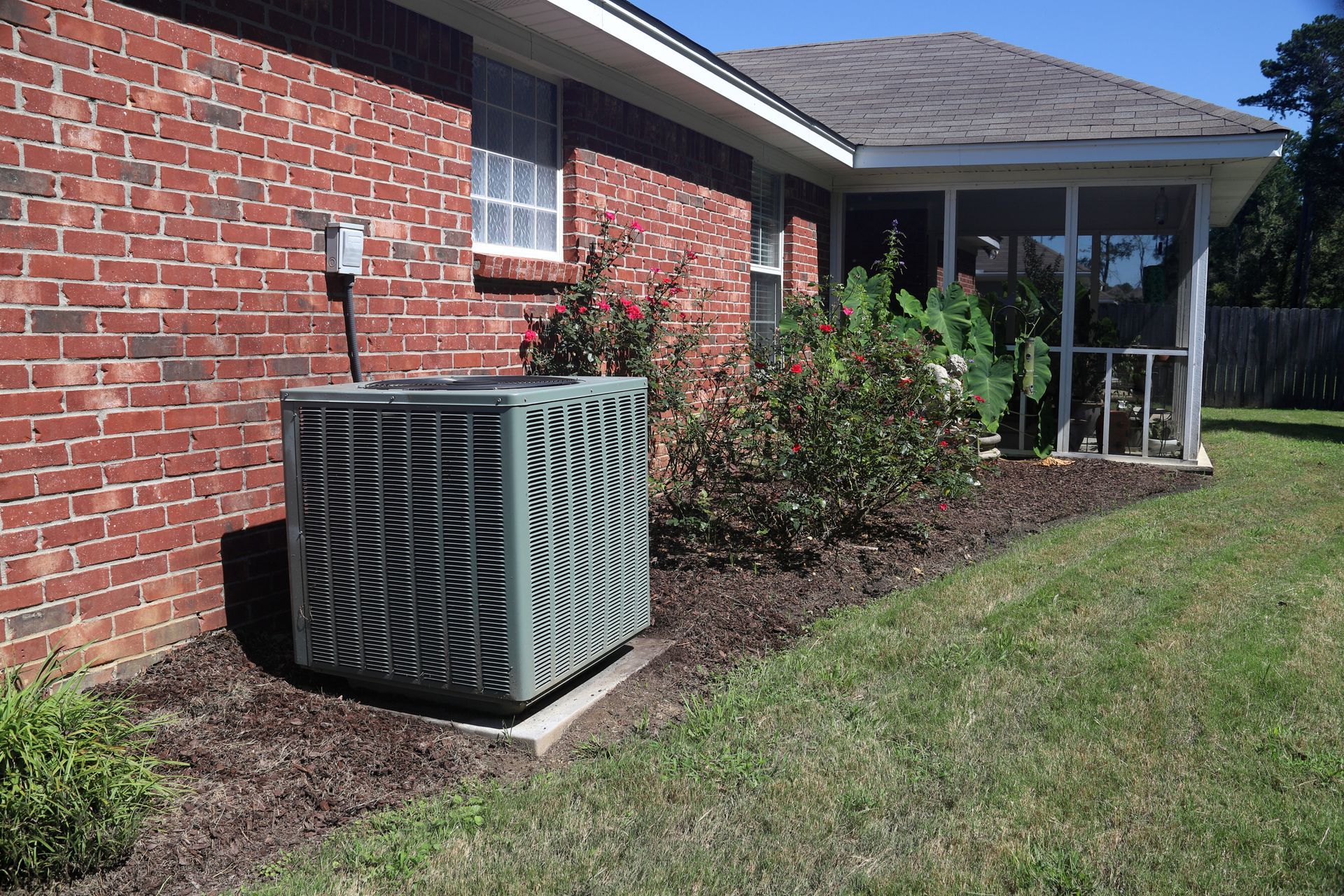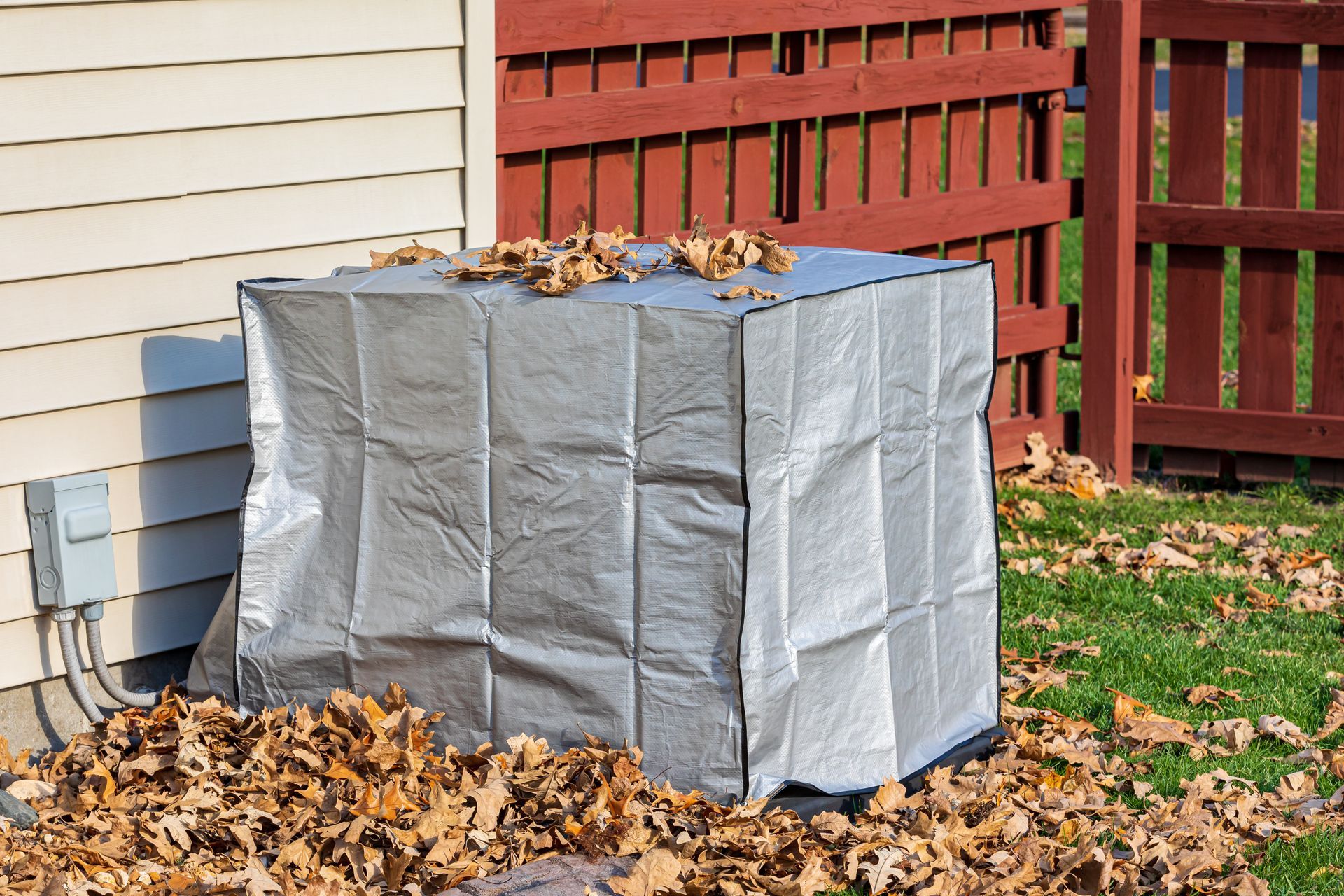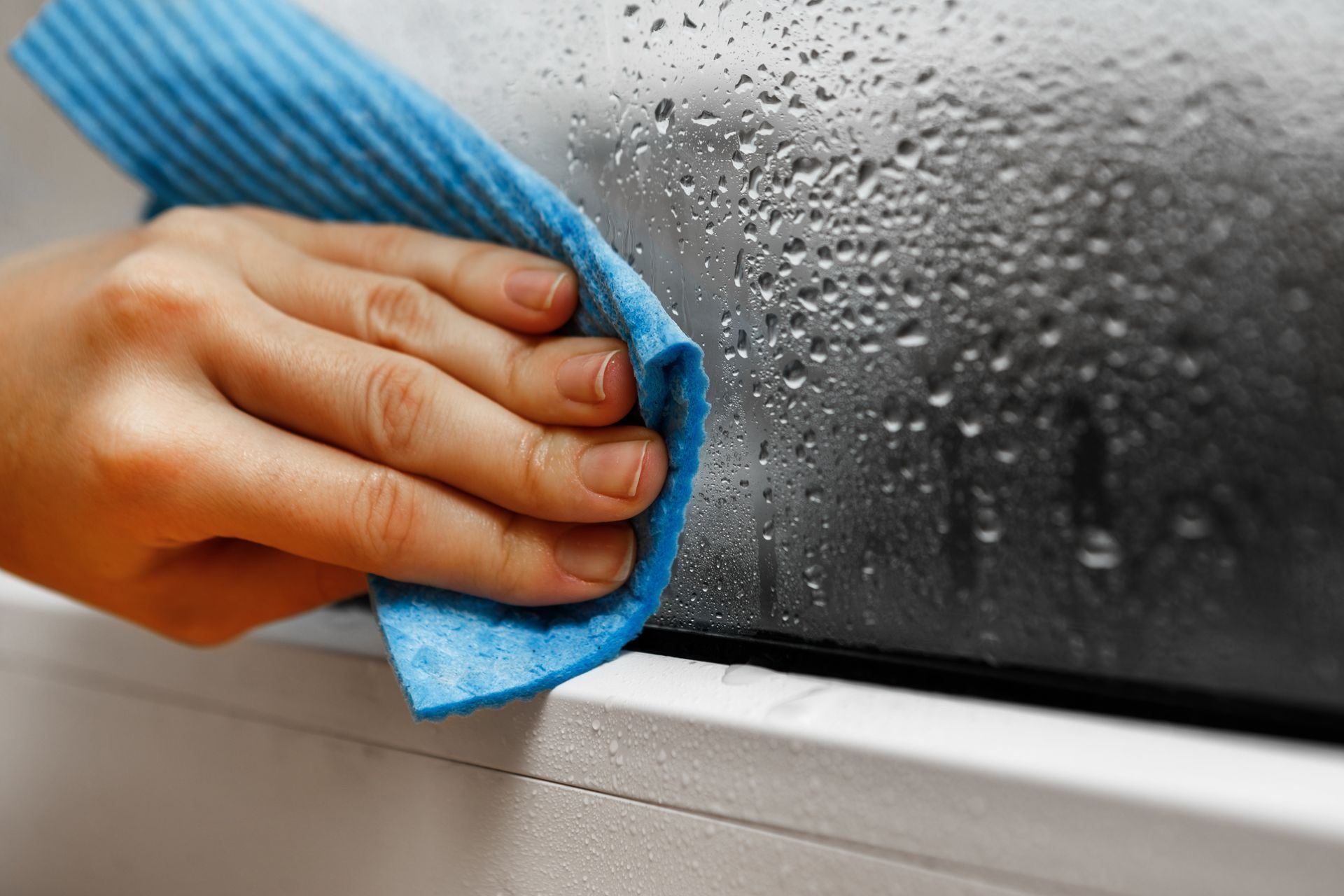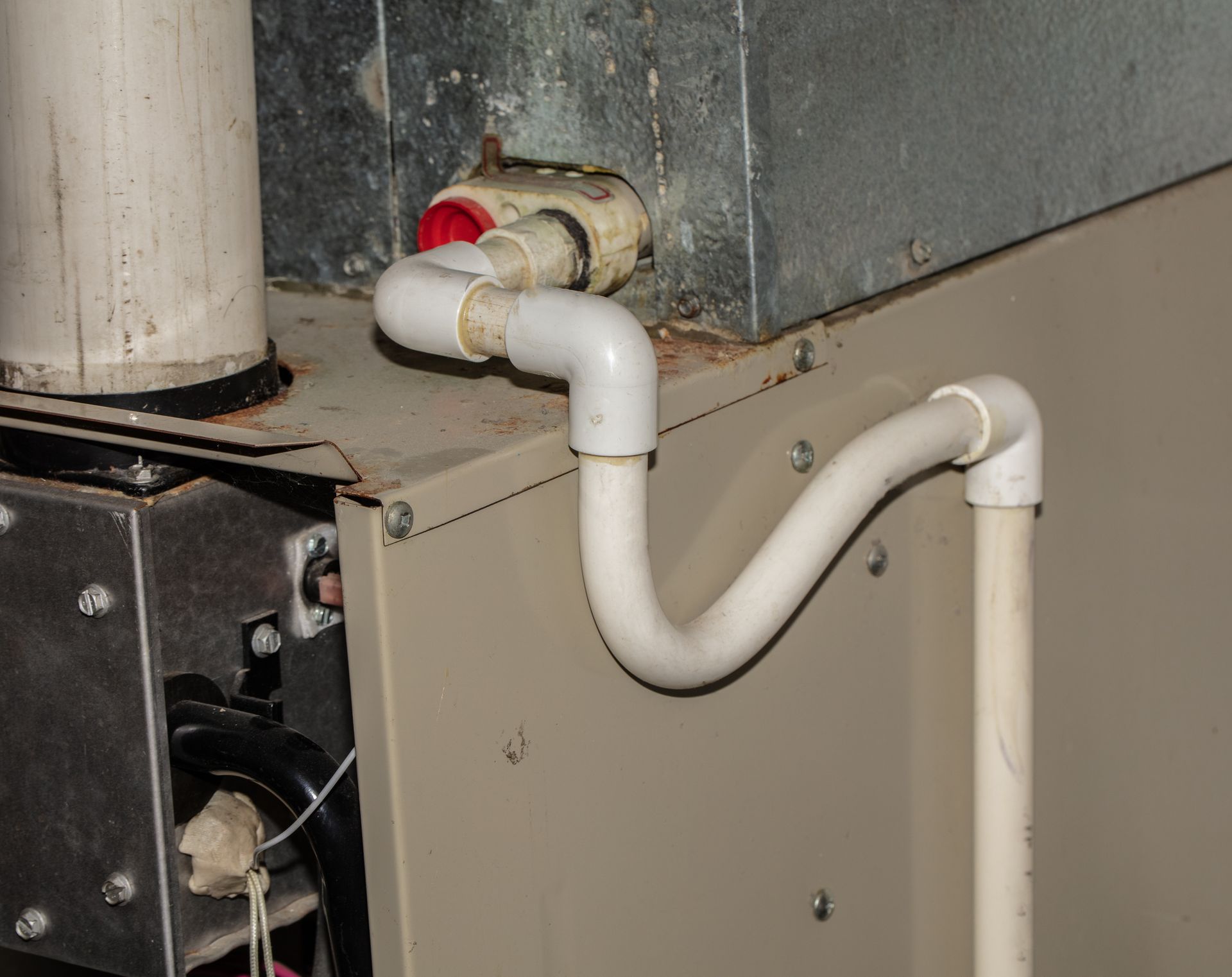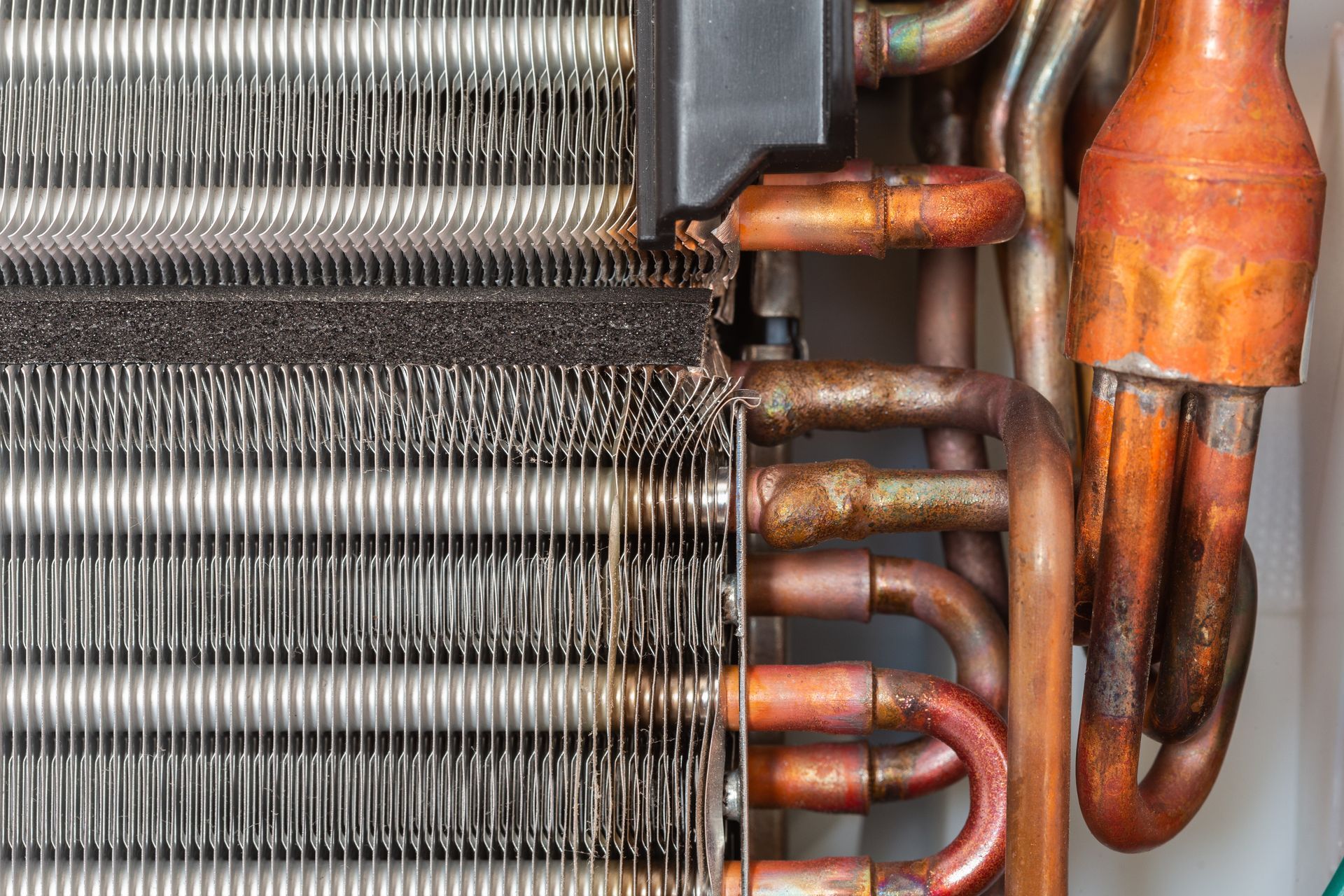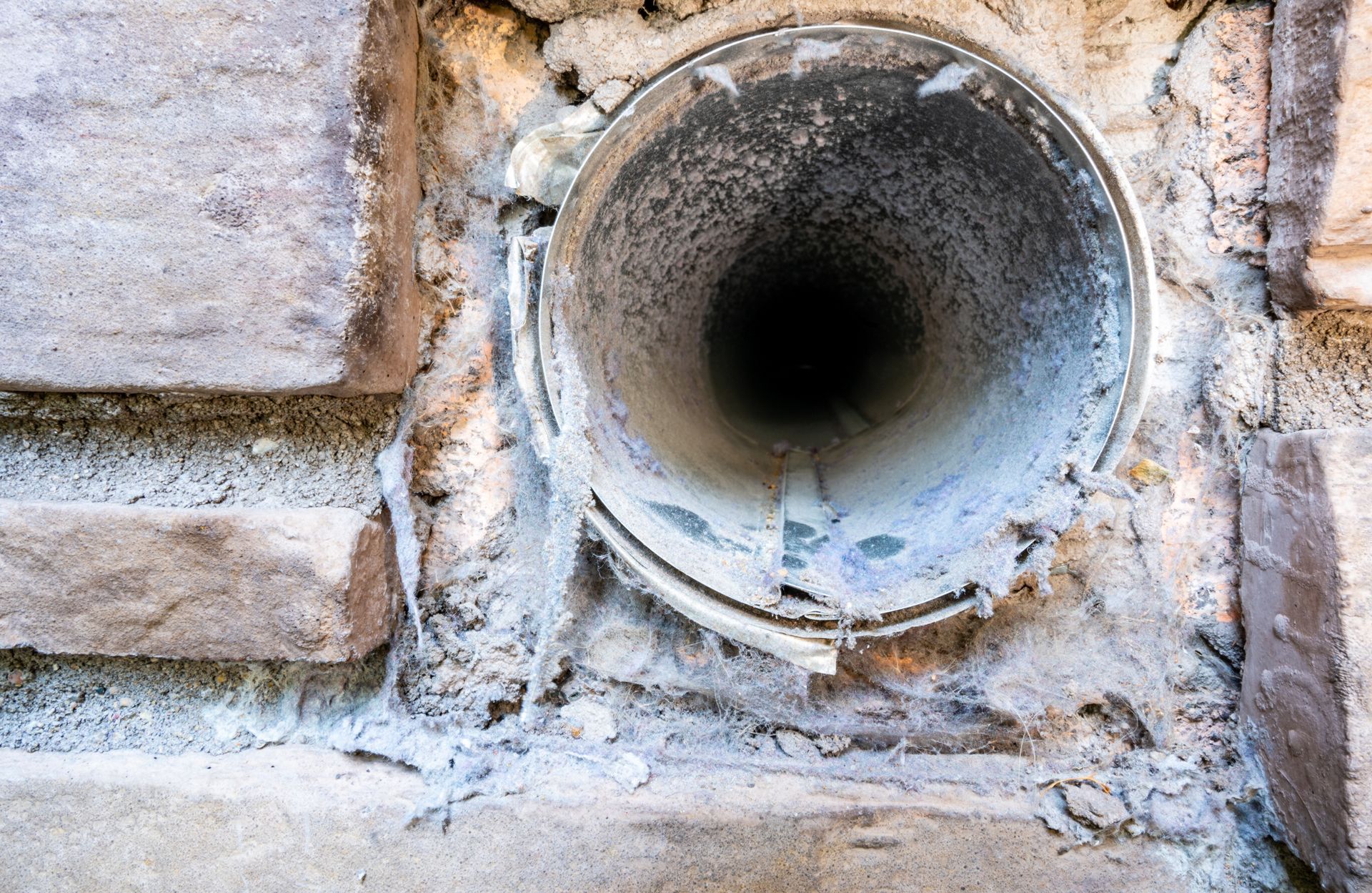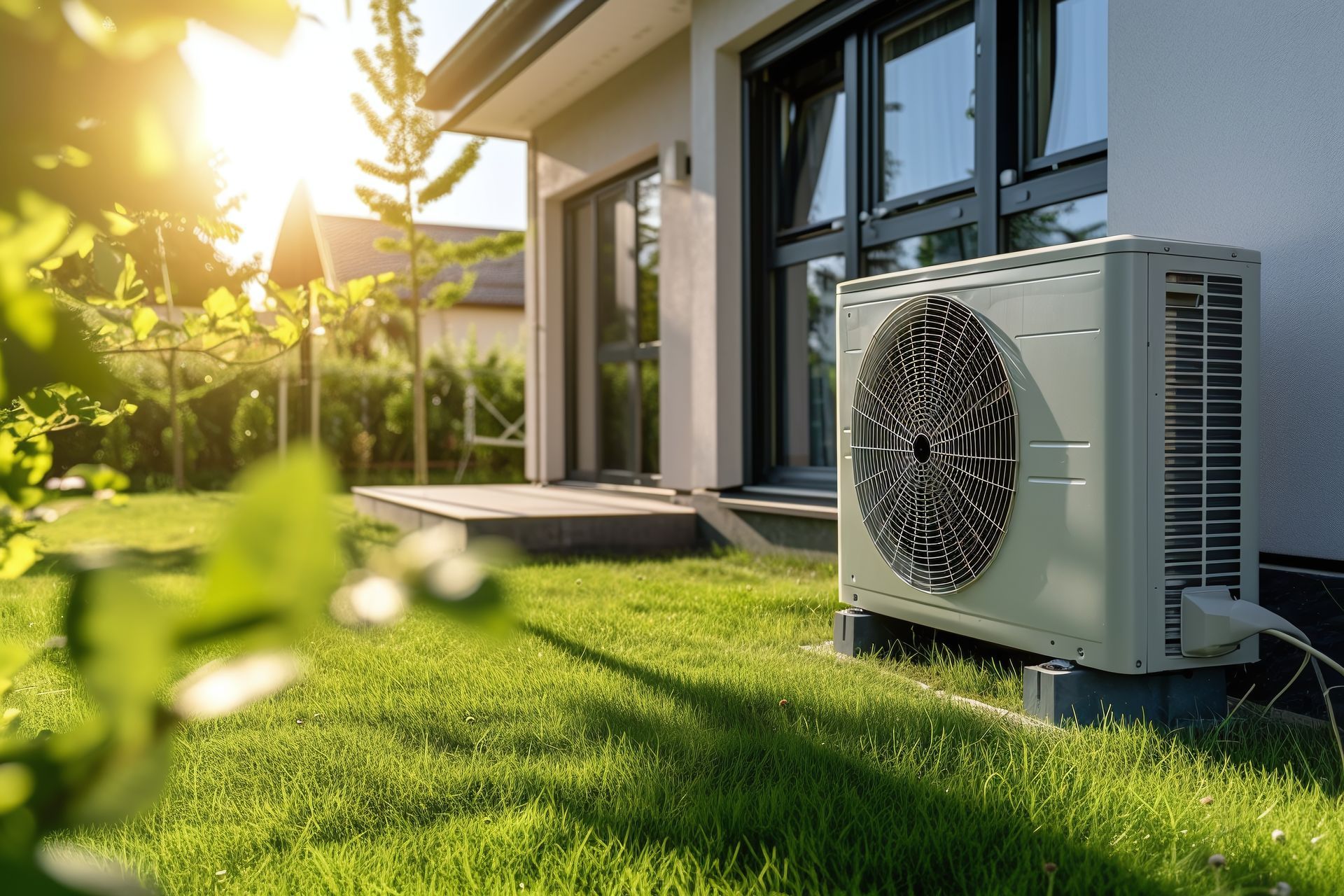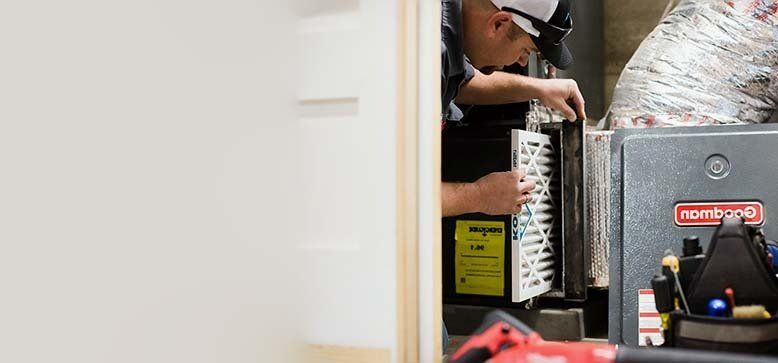What is Forced Air Heating?
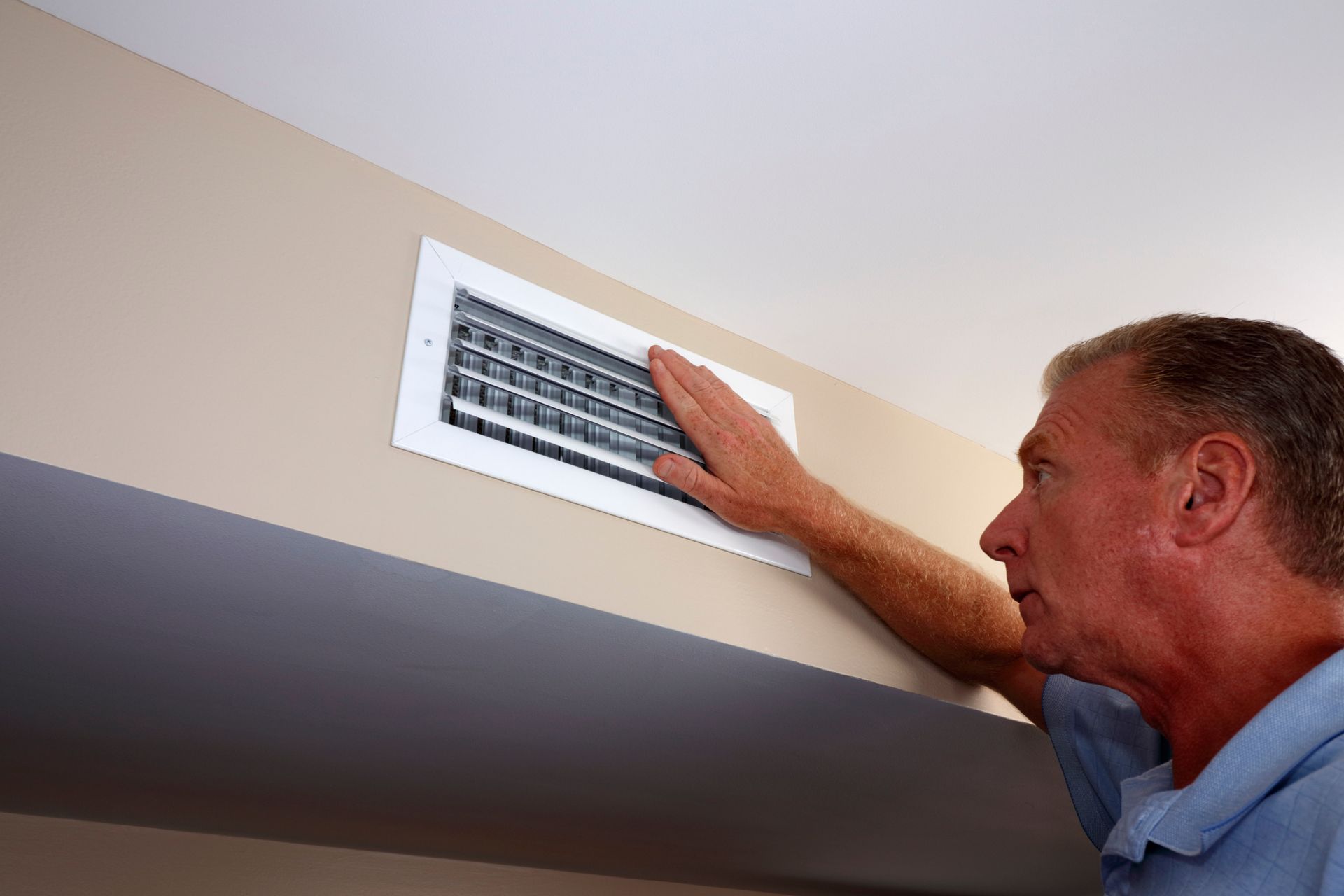
Forced air heating is a prevalent HVAC system that heats homes by using air as the primary heat transfer medium. This system operates by using a heat source that’s usually powered by electricity, natural gas, propane, or oil to warm the air that circulates through it. An intake fan circulates air from inside a room and moves it through the forced air heating system. The air that is pulled through the system is then distributed throughout the home via a network of ducts. These ducts are typically concealed within walls, crawlspaces, or attics and distribute the warm air to various rooms. They support the cycle of airflow within the house and bring air back to be heated through return ducts. A thermostat typically controls these systems and ensures a consistent and comfortable set temperature.
The central unit, or air handler, is made up of essential components like filters, a blower, heat exchanger or coil, and electronic controls. While there are various types of heating systems, forced air systems are far easier to install than hydronic systems that rely on water or steam. The most common forced-air systems are furnaces and heat pumps with each system having its advantages that depend on a region's climate.
What are the Parts of a Forced Air Heating System?
A forced-air heating system is a comprehensive assembly of components working together to heat and circulate air throughout a home. To fully grasp its operation, it's essential to understand its primary parts and their functions:
- Heat Source: A furnace or heat pump heats the air before distribution.
- Thermostat: This device regulates the home's temperature and signals to the heat source when to activate or deactivate.
- Supply Ducts: These channels distribute the heated air to different areas of the home.
- Return Ducts: These facilitate air circulation by moving air back to the heat source to maintain a consistent temperature.
- Air Plenum: This collects cool air, heats it, and then channels it into the supply ducts.
- Heat Exchanger: Positioned between the combustion chamber and blower, this metal shield transfers heat from the source to the incoming unheated air.
- Blower Fan: This fan propels the heated air through the supply ducts and simultaneously generates suction in the return ducts.
- Safety Switches and Sensors: These ensure the heat source only operates under safe conditions.
- Combustible Fuel Exhaust: A crucial safety feature that expels dangerous combustion gases from the home.
Optional Components:
- Zoning Dampers: These control the volume of airflow through supply ducts.
- Zone Thermostats: Allow for temperature regulation in specific areas or zones.
- Internal Duct Fans: These can support the main blower fan when needed.
- Fresh-Air Intake: Incorporated when a furnace is the primary heat source, ensuring a continuous supply of fresh air.
Understanding these components can enhance communication with HVAC professionals and ensure optimal system performance.
How Does Forced Air Heating Work?
Most forced-air heating systems are backed by a gas furnace and operate through a sequence of steps to efficiently heat a home. Here's what that process looks like:
- Thermostat Activation: The thermostat detects a drop in temperature that reaches below the set desired room temperature which sends an electrical signal to the furnace.
- Safety Checks: The furnace conducts a series of safety checks before ignition occurs to ensure a safe startup.
- Exhausting Gasses: Modern furnaces initiate an inducer motor to discharge any residual gases from the previous heating cycle.
- Pressure Switch Check: A subsequent safety check is performed by a pressure switch.
- Ignition: The heat source is activated through a surface igniter, standing pilot, or spark ignition. Electric systems predominantly use spark or surface ignitions while gas furnaces are more likely to use continuously burning standing pilots.
- Heat Exchange: Air is warmed as it passes over the heat exchanger and accumulates in the plenum which is a chamber that connects the HVAC system to the ductwork.
- Air Circulation: A blower fan propels the heated air into the supply ducts which distribute it throughout a home. When this occurs, suction is created in the return ducts which draws cool air back into the system.
- Fresh Air Intake: To maintain indoor air quality, fresh air is drawn into the system which prevents the furnace from sourcing air from potentially unclean areas like attics or crawlspaces.
- System Shutdown: Once the desired temperature set on the thermostat is achieved, it signals the system to deactivate and places it in standby mode until the next heating cycle is required.
This sequence ensures a consistent and comfortable indoor environment with safety and efficiency at its core.
What’s the Difference Between Forced Air Heating and Central Air?
Forced-air systems are integral to regulating a home's temperature and encompass both heating and cooling components. While the terms "forced-air heating" and "central air" are often mistakenly used interchangeably, they refer to distinct functions within an HVAC system. Forced-air heating pertains solely to the heating aspect which is typically facilitated by various types of furnaces. In contrast, central air specifically denotes the air conditioning component. Despite their differences, both systems operate together and use the same ductwork, registers, and air handler. Homes in regions with diverse temperature ranges usually employ both forced-air heating and central air which leverages the same infrastructure for efficiency. Homes in predominantly cold areas might only utilize forced-air heating, while those in warmer climates might exclusively rely on central air.
Types of Forced Air Heating Systems
Forced air heating systems come in various types, each with their unique mechanism and advantages. Here's a breakdown of the primary forced heating types:
Combustion Heating Systems
Natural gas, propane, oil, coal, and wood heaters are popular heating solutions that generate warmth through the combustion of fuels. Within these systems, a heat exchanger ensures that combustion byproducts are isolated from the circulating air. Burners can be ribbon-style, inshot, or specifically designed for oil and they're strategically positioned within the heat exchanger. The ignition process is facilitated by various mechanisms including electric sparks, standing pilots, or hot surface igniters. These heaters are equipped with devices that prevent the buildup of combustion gases or unburned fuel to ensure safety in scenarios where ignition or venting might fail.
Electrical Heating Systems
Electrical heating systems utilize a heating element to warm the air. When the thermostat requests heat, both the blower and the heating element activate. Once the desired temperature is achieved, both components deactivate. These systems require minimal maintenance, but they often come with higher operational costs when compared to natural gas furnaces.
Heat Pumps
Heat pumps are energy-efficient HVAC systems that harness heat from the environment through the refrigeration cycle. They typically consume less energy than electric resistance heaters and can be more efficient than traditional fossil fuel furnaces. While air source heat pumps might not be ideal for extremely cold climates, advancements in newer models allow them to function even in temperatures below freezing. Instead of a conventional burner or heat exchanger, heat pumps utilize a refrigerant coil situated in the air handler. This mechanism reverses the flow of hot air exhausted by air conditioners by blowing hot air inside rather than outside. This allows heat pumps to serve both heating and cooling purposes depending on an individual’s needs.
Hydronic Coil Systems
A hydronic coil is an innovative component that merges hydronic (hot water) heating with forced air delivery. This system generates heat through the combustion of fuels like gas, propane, or oil within a boiler. The hydronic coil heat exchanger is strategically positioned in the air handler which bears similarities to the refrigerant coil found in heat pumps or central air-conditioning systems. It is typically made of copper and circulates heated water through the heat exchanger before returning it to the boiler for reheating.
What are the Benefits of Forced Air Heating Systems?
Forced air heating systems offer advantages when compared to other heating systems which make them a popular choice for many homeowners. Here are the key benefits:
- Cost-Efficiency: Forced air heating systems are sometimes cheaper to operate when compared to hydronic systems. Modern units are more energy-efficient than older models, with some boasting an annual fuel utilization efficiency (AFUE) between 95% and 100%. This high efficiency translates to up to $500 annually on energy bills.
- Quick Heating: One of the standout features of forced air systems is their ability to heat homes almost instantaneously. Once activated, the heat source rapidly warms the air and swiftly distributes it throughout the home via ductwork.
- Reliability: These systems are known for their reliability. There's a reduced risk of breakdowns with fewer moving parts. When issues do arise, components like fans, belts, or motors are typically straightforward to replace.
- Ease of Installation: For homes already equipped with duct work, installing a forced air heating system is relatively simple, which makes it a cost-effective choice. Even if a furnace needs to be replaced, the existing duct and vent system can still be utilized.
- Air Filtration: Forced air systems incorporate a filtering process which enhances indoor air quality by removing potential allergens and contaminants.
- Longevity: Furnaces in forced air systems can last up to 30 years which offer homeowners a long-term heating solution.
Forced air heating systems combine efficiency, speed, and reliability which make them a favored option for many seeking a dependable and cost-effective home heating solution.
What are the Disadvantages of Forced Air Heating Systems?
While forced air heating systems offer numerous advantages, they also come with certain drawbacks that potential users should be aware of. Here are the key disadvantages of these systems:
- Carbon Monoxide Production: Combustible fuels used in these systems can produce carbon monoxide which is a hazardous gas. If not properly vented, this gas can pose serious health risks.
- Maintenance Needs: These systems require regular maintenance, including frequent filter replacements and duct cleaning, to ensure optimal performance and safety.
- Noise Levels: Despite advancements making them quieter, forced air systems are not completely silent. The sound of air being pushed through ducts can be noticeable, especially when the system turns on.
- Duct Concerns: Duct-based systems can accumulate dust or mold which can be blown by the forced air and spread throughout the living space. Heat loss can also occur through any leaks as air travels through the ducts which can further compromise efficiency.
- Inconsistent Heating: The centralized control via a thermostat can lead to uneven heating in larger homes. The distance air travels, potential heat loss in ducts, and duct placement can result in temperature variations across rooms. Areas near poorly insulated windows or external doors might feel cooler.
- Installation Costs: While installation is straightforward in homes with pre-existing ductwork, the absence of such infrastructure can significantly increase the installation expenses.
While forced air heating systems are efficient and popular, it's essential to weigh their benefits against these potential drawbacks to make an informed decision for your home's heating needs.
How to Maintain a Forced Air Heating System?
Forced air heating systems are efficient but require regular maintenance to ensure optimal performance and longevity. Proper upkeep not only ensures the system's efficiency but also safeguards the health of the occupants by ensuring good air quality. Here are the essential maintenance steps for these systems:
- Air Filter Maintenance: A pivotal aspect of system maintenance is the air filter. A clogged filter forces the system to exert more energy which leads to inefficiency. It's advisable to replace or clean the filter monthly during peak usage in winter and at least quarterly during off-peak times.
- Annual System Inspection: Engage a professional to conduct a thorough inspection of your heating system annually. This helps in early detection of potential issues which ensures the system's longevity.
- Duct Cleaning: Accumulated dust and debris in the air ducts can hamper airflow and degrade air quality. It's recommended to clean the supply and return air ducts annually.
- Clear Obstructions: Ensure that all HVAC components including vents remain free from obstructions and clutter. This ensures efficient airflow and system performance.
- Thermostat Maintenance: If your thermostat uses batteries, ensure they are in good condition and replace them as needed.
- Carbon Monoxide Detectors: Given the risk of carbon monoxide production in combustion-based systems, maintaining and regularly checking carbon monoxide detectors is crucial for safety.
- Monitor Energy Bills: A sudden spike in energy bills can be indicative of system inefficiencies or issues. Regularly reviewing your bills can help detect problems early.
- Professional Tune-Up: Periodic professional tune-ups encompass various checks and tasks. Some of these include checking the blower motor, inspecting the heat exchanger, conducting a combustion analysis, and inspecting the inducer motor.
What are Some Alternatives to Forced Air Heaters?
While forced air heating systems are prevalent in many North American homes, there are several alternatives that homeowners can consider for their heating needs:
- Baseboard Heaters: These heaters offer a zonal heating approach, allowing homeowners to heat specific rooms or zones within their homes. Typically positioned under windows to counteract incoming cold drafts, there are two main types:
- Electric Baseboard Heaters: These units directly heat individual rooms. They provide the flexibility to heat specific areas without warming the entire house.
- Convection Baseboard Heaters: These heaters function by drawing in cool air and releasing warm air, creating a natural circulation of heated air in the room.
- Hydronic Baseboard Heaters: These units contain a liquid like water which is heated and subsequently warms the surrounding air. They offer a more consistent and longer-lasting heat compared to their electric counterparts.
It's worth noting that while baseboard heaters provide localized heating, they might take longer to warm up a space. The heat tends to be more concentrated near the heater and gradually reduces as you move further away.
In contrast to the dominance of forced air systems in North America, European homes often employ hydronic heating with hot-water radiators. This method uses water to transfer heat throughout the home and offers a different kind of warmth and efficiency.
Contact GS Home Services If You Are Considering a Forced Air Heater
As the colder months approach, keeping your home cozy is critical. At GS Home Services, we specialize in heater installations and tune-ups so we can ensure optimal performance and efficiency. Don't wait for the chill to set in. Our team of experts is ready to provide you with top-notch service and ensure your home stays warm and inviting all winter long. Contact GS Home Services today and experience the difference of professional care for your heating needs.


